Research centers
Michigan engineers know it doesn’t always take a big grant to solve a big problem – but it certainly helps. The largest ongoing projects led by U-M engineering faculty aim to solve some of the planet’s toughest challenges.
Jump to: Automotive Research Center, Center for Complex Particle Systems (COMPASS), Center for Connected and Automated Vehicles (CCAT),Cyclone Global Navigation Satellite System (CYGNSS), Center for Materials Innovation (MRSEC), Electric Vehicle Center, Mcity 2.0, Mechano-chemical Understanding of Solid Ion Conductors (MUSIC), Nanoscale and Transduction‐Optimized Pristine Ferroelectric Nitrides (NanoTOP), New Game Theory for New Agents: Foundations and Learning Algorithms for Decision-Making Mixed-Agents, PRedictive Integrated Structural Materials Science Center (PRISM), Space Power and Propulsion for Agility, Responsiveness and Resilience Institute
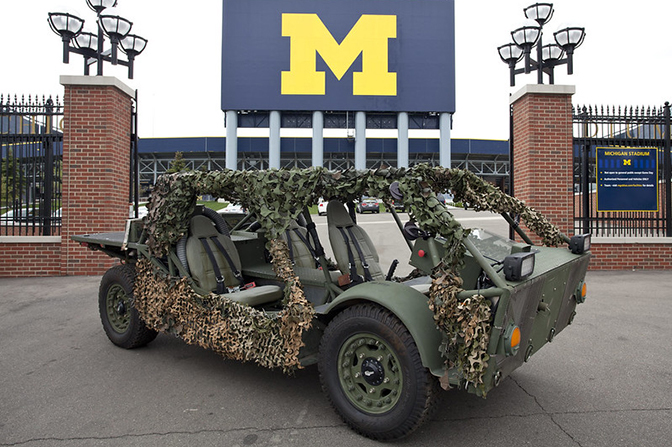
Automotive Research Center
The Automotive Research Center (ARC) operates at the crux of military, academic, and industry research and advancement for ground vehicle systems. Sponsored by the U.S. Army as a Center of Excellence, the University of Michigan team, led by Bogdan Epureanu, collaborates with industry and university partners to address gaps in mobility, survivability and operational efficiency. ARC projects assess, design and implement tools and technology to this end.
Other U-M collaborators are Andre Boehman.
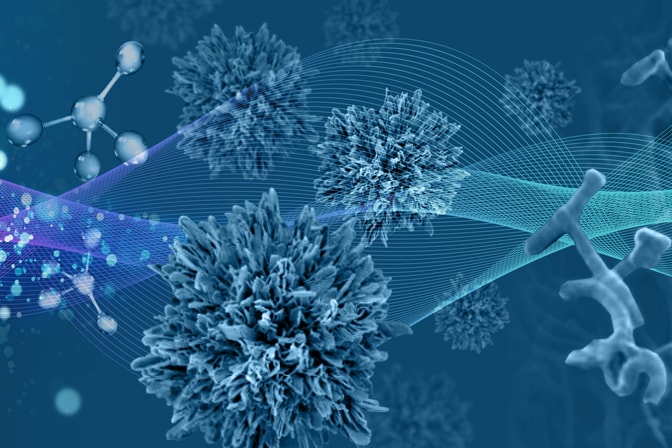
Center for Complex Particle Systems (COMPASS)
COMPASS, led by Nicholas Kotov, is a collaborative home for theoretical, experimental, and computational researchers who are developing a systems-level approach to particle-based matter for sustainable energy-efficient manufacturing.
A people-first culture grounded in equity, diversity, and inclusion is integrated throughout Center leadership, research, education, training, and outreach activities.
COMPASS is a five-year, $30 million center funded by the National Science Foundation. U.S. university partners include North Carolina State University, Wayne State University, the University of Illinois Urbana-Champaign, Chicago State University, Northeastern University and the University of Southern California. Industry partners include Boeing, Airbus, Electra.aero, and Aurora Flight Sciences as well as the manufacturing organizations LIFT and America Makes.
Other U-M collaborators include Science Lead Sharon Glotzer, Education Lead Ronald Larson, Technology Lead Ellen Arruda, and Knowledge Transfer Lead Pierre Ferdinand Poudeu.

Center for Connected and Automated Vehicles (CCAT)
Launched in 2016 and bolstered by a $15 million, five-year grant from the U.S. Department of Transportation (USDOT) in 2023, CCAT now brings together nine colleges and universities to focus on significantly advancing the U.S. transportation system with emerging technologies that address safety and sustainability. Henry Liu serves as the director of CCAT.
CCAT members include Purdue University, University of Akron, University of Illinois at Urbana Champaign, Washtenaw Community College, Central State University, Northwestern University, University of Minnesota and University of Wisconsin-Madison.
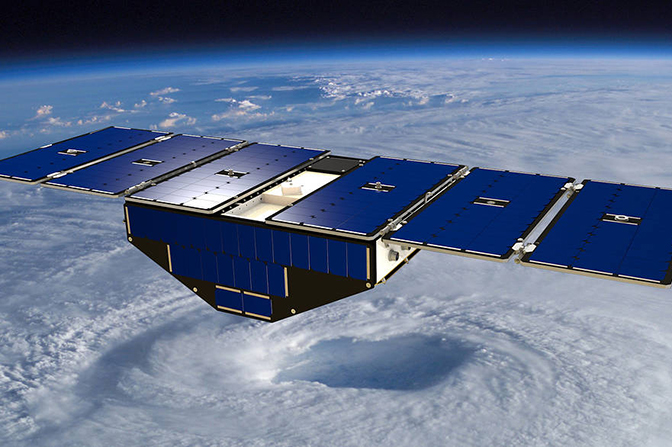
Cyclone Global Navigation Satellite System
Improving hurricane and extreme-weather prediction is the goal of a new $151.7 million NASA satellite project. Led by U-M’s Christopher Ruf, and part of NASA Earth System Science Pathfinder program, the Cyclone Global Navigation Satellite System (CYGNSS) launched in 2016. The system uses a constellation of eight small satellites in orbit to receive signals scattered by the ocean surface from Global Positioning System (GPS) satellites. The mission will probe key air-sea interaction processes that take place near the inner core of the storms, helping advance forecast and tracking methods.
Other U-M collaborators involved in CYGNSS include Derek Posselt, Aaron Ridley and Perry Samson.
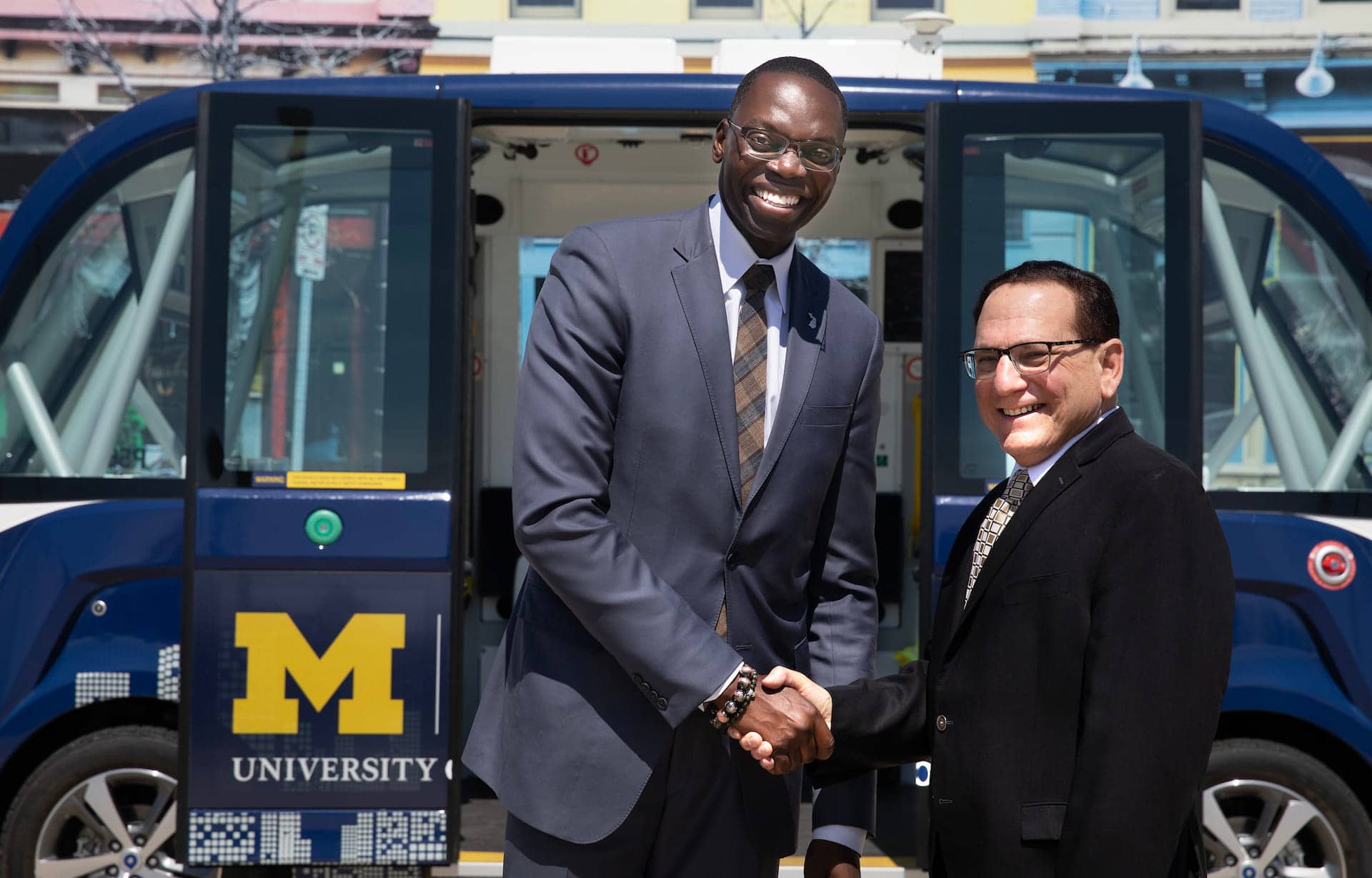
Electric Vehicle Center
Fueled by a $130 million investment from the state of Michigan’s Department of Labor and Economic Opportunity (LEO) and guided by an industry-driven roadmap, the EV Center drives EV tech and talent by uniting researchers, educators and industry leaders to tackle challenges and expand opportunities in transitioning to vehicle electrification.
The EV Center is led by Alan Taub.
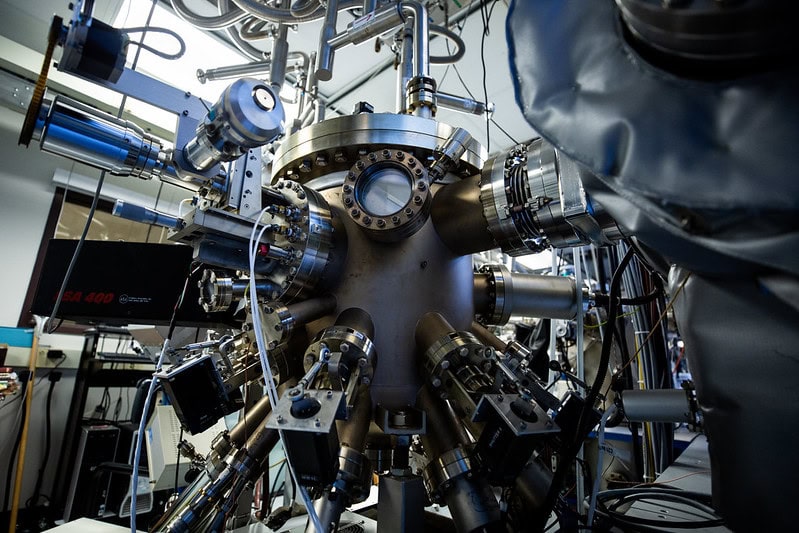
Center for Materials Innovation
The Center for Materials Innovation at Michigan is a Materials Research Science and Engineering Center (MRSEC) supported by the National Science Foundation. The center, led by Rachel Goldman, establishes a transformative campus-wide eco-system to accelerate the design, discovery, and deployment of novel materials critical for the industries of tomorrow, including advanced manufacturing, clean energy/sustainability, artificial intelligence, and future semiconductors.
Embedded in the eco-system is a long-term partnership between U-M researchers and collaborators from industry, academia, and national laboratories.
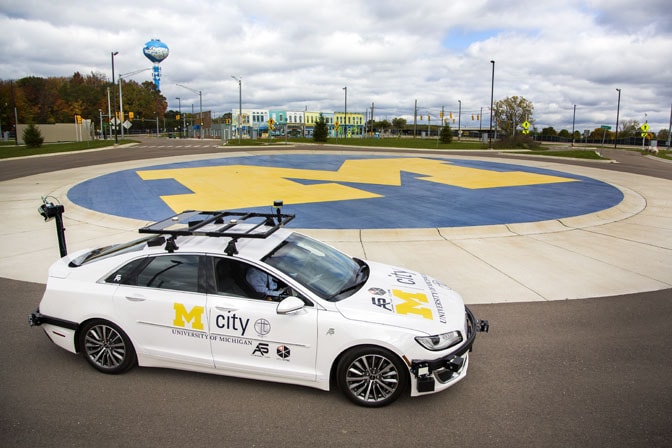
Mcity 2.0
Mcity 2.0 is a platform designed to help users remotely test and refine autonomous vehicle (AV) motion planning algorithms. It allows academic and industry users to conduct tests in both simulated and mixed reality environments without needing a complete AV system or physical testing facility. Mcity 2.0 integrates digital infrastructure with physical facilities to provide real-time visualization of AV status, safety metrics, and testing data, which are archived for ongoing analysis and improvement.
Backed by a $5.1 million, 4-year grant from the National Science Foundation, the Mcity 2.0 project, directed by Henry Liu, makes the facility’s technology, datasets and physical test track available to researchers anywhere in the U.S. without requiring them to travel to Michigan.
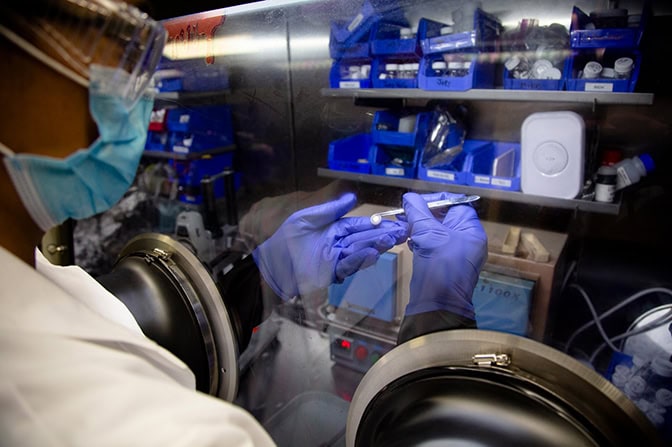
Mechano-chemical Understanding of Solid Ion Conductors (MUSIC)
MUSIC is a four-year, $11 million DoE Energy Frontier Research Center (EFRC) that launched in 2022 to enhance understanding of an emerging branch of science involving mechanical and chemical phenomena that affect advanced battery designs. U-M and eight partner institutions are exploring the use of ceramic ion conductors as replacements for the traditional liquid or polymer electrolytes in common lithium-ion batteries for electric vehicles and in flow cells for storing renewable energy in the grid.
Jeff Sakamoto serves as the director of the MUSIC center, and Neil Dasgupta is the deputy director. Partner institutions include Massachusetts Institute of Technology, University of Texas, Austin, Northwestern University, Georgia Institute of Technology, Princeton University, University of Illinois at Urbana-Champaign, Oak Ridge National Laboratory and Purdue University.
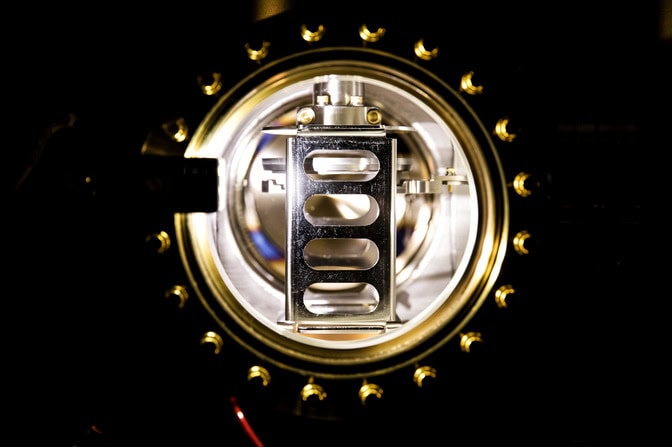
Nanoscale and Transduction‐Optimized Pristine Ferroelectric Nitrides (NanoTOP)
While old hard drives used to store information in slow-to-switch magnetic fields encoding 1s and 0s, and solid state drives use equally slow electric-charge switches, this Multidisciplinary University Research Initiative led by Zetian Mi seeks to use faster switchable electric fields as part of an effort to develop a new class of ferroelectric devices. Switched with pulses of light, they could achieve millionfold speed increases over other memories, enabling storage of both classical and quantum states. The Department of Defense funded this MURI with $7.5M over five years.
The research team also includes collaborators from Ohio State, Georgia Tech, Penn State, and Yale.

New Game Theory for New Agents: Foundations and Learning Algorithms for Decision-Making Mixed-Agents
With a $7.5 million investment from the Department of Defense over five years, this Multidisciplinary University Research Initiative led by Vijay Subramanian aims to update game theory so that it can include less capable, sometimes robotic agents powered by AI. Researchers will explore multiple agents working as a team—for example, to respond to a disaster—as well as agents working against one another. As a secondary aim, the team will explore effects related to information exchange such as delays and partial awareness.
The MURI includes collaborators from Yale University, Toyota Technological Institute Chicago, University of Southern California, Massachusetts Institute of Technology, Harvard University, California Institute of Technology and Cornell University.
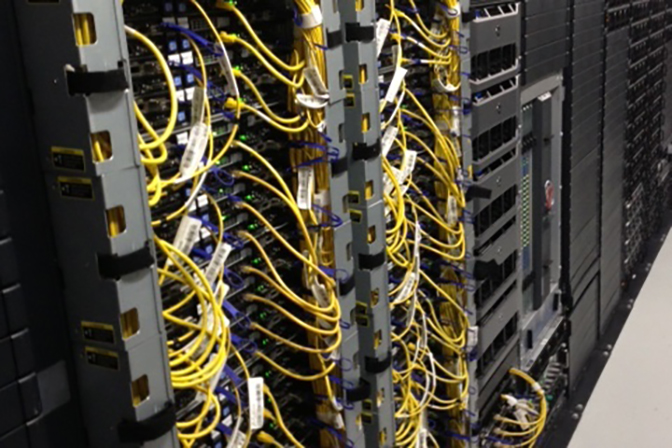
PRedictive Integrated Structural Materials Science Center
Many innovations only become possible when the right material is accidentally discovered. The goal of the PRedictive Integrated Structural Materials Science Center, or PRISMS, is to change that. By developing a predictive understanding of how structure relates to material properties, researchers will be able to engineer materials that have the qualities that they need to invent new technologies. This effort to model materials from the macroscale to the nanoscale is led by John Allison, a professor of Materials Science and Engineering, and is backed with $11 million from the Department of Energy’s Materials Genome Project.
Other U-M faculty and staff working on the grant are Larry Aagesen, Samantha Daly, Krishna Garikipati, Vikram Gavini, Margaret Hedstrom, H.V. Jagadish, Wayne Jones, Emmanuelle Marquis, Brian Puchala, Veera Sundararaghavan, Katsuyo Thornton and Glenn Tarcea. In addition, over 15 students and postdocs are actively involved in this program.
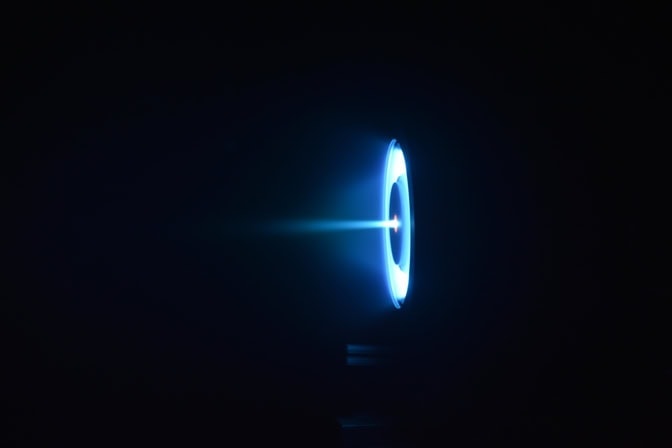
Space Power and Propulsion for Agility, Responsiveness and Resilience Institute
Launched in 2024 with $35 million from the U.S. Space Force, this U-M-led institute brings together fast chemical rockets and efficient electric propulsion powered by a nuclear microreactor. It involves eight universities and 14 industry partners and advisers in one of the nation’s largest efforts to advance space power and propulsion, a critical need for national defense and space exploration.
Ben Jorns serves as the director of the Space Power and Propulsion for Agility, Responsiveness and Resilience Institute.